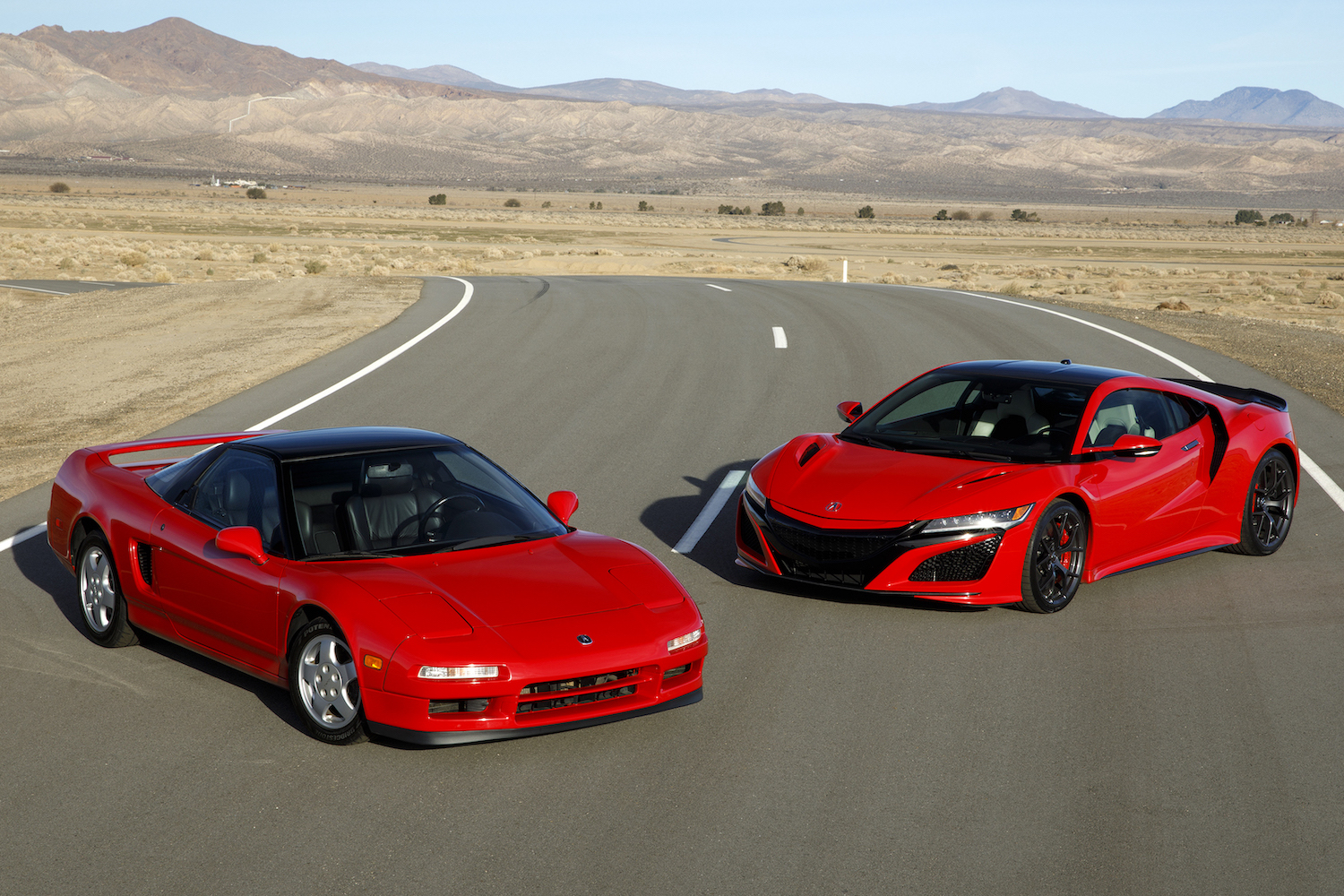Acura NSX Buyers Guide

The Acura NSX is a car that redefined the supercar segment when it debuted in 1990. Combining exotic performance with Honda’s legendary reliability, it offered a thrilling driving experience without the usual headaches associated with high-performance cars. Whether you’re drawn to the original first-generation models or the cutting-edge hybrid second generation, buying an NSX is both an emotional and financial investment. Here’s everything you need to know before you buy.
First-Generation Acura NSX (1990–2005)
Key Highlights:
- Engine and Performance: Powered by a naturally aspirated 3.0-liter V6 (C30A) producing 270 horsepower initially, the engine grew to a 3.2-liter (C32B) in 1997, increasing output to 290 horsepower. Both engines feature Honda’s VTEC technology, providing thrilling performance and reliability.
- Transmission: Early models came with a 5-speed manual or a 4-speed automatic. In 1997, a 6-speed manual became available, offering sharper performance.
- Chassis: With an aluminum monocoque body, the NSX was incredibly lightweight for its time, improving handling and fuel efficiency.
- Design: The design is timeless, with pop-up headlights (pre-2002) or fixed headlights (2002–2005).
Common Issues:
- Timing Belt and Water Pump: Ensure these have been replaced every 6–8 years. Failure can result in catastrophic engine damage.
- Clutch Replacement: Manual models are prone to wear, especially if driven hard. A clutch replacement can cost upwards of $3,000.
- Snap Ring Transmission Issue: Early models (1991–1992) with manual transmissions may suffer from a snap ring failure, which can lead to transmission rebuilds.
- AC System: The air conditioning system, particularly the compressor, is prone to failure in older models.
Pricing and Market Trends:
- 1990–1996: These earlier models, often referred to as “pre-facelift,” typically range from $70,000 to $100,000, depending on mileage and condition.
- 1997–2001: Post-facelift models with the larger engine and 6-speed transmission command a premium, usually between $90,000 and $120,000.
- 2002–2005: Final facelift models with fixed headlights are highly sought after, often fetching $110,000 to $150,000 or more in pristine condition.
Second-Generation Acura NSX (2016–Present)
Key Highlights:
- Engine and Performance: The second-gen NSX features a 3.5-liter twin-turbocharged V6 paired with three electric motors, delivering a combined 573 horsepower. The hybrid powertrain ensures instantaneous torque and all-wheel drive.
- Transmission: A 9-speed dual-clutch automatic provides seamless shifts and exceptional performance.
- Chassis: The use of advanced materials like aluminum and carbon fiber ensures rigidity and light weight.
- Technology: Equipped with drive modes ranging from Quiet to Track, the NSX adapts to a wide range of driving conditions.
Common Issues:
- Battery Life: The hybrid system’s battery pack may degrade over time, affecting performance. Ensure the vehicle has been serviced by a certified Acura dealer.
- Tire Wear: The high-performance nature of the NSX means frequent tire replacements. Check for uneven wear.
- Brakes: Carbon-ceramic brakes (if equipped) are costly to replace, so inspect their condition.
- Electronics: Some owners have reported glitches in the infotainment system, which can be resolved with software updates.
Pricing and Market Trends:
- 2016–2020: Early models typically range from $130,000 to $160,000.
- 2021–2022: Mid-cycle refreshed models can command between $150,000 and $180,000.
- 2022 Type S: Limited to just 350 units, this high-performance variant is highly collectible, often exceeding $200,000.
Inspection Checklist:
Regardless of the generation, a pre-purchase inspection (PPI) by a qualified specialist is crucial. Here’s a checklist to guide you:
- Exterior and Body: Look for signs of accidents, paint mismatches, or corrosion.
- Engine: Check for oil leaks, unusual noises, and maintenance history.
- Suspension: Inspect for worn bushings, leaking shocks, and proper alignment.
- Interior: Ensure electronics, climate control, and infotainment systems are functioning correctly.
- Service Records: Verify regular servicing, particularly for timing belt replacements on first-gen models and hybrid system maintenance on second-gen models.
Ownership Costs:
- Maintenance: Routine maintenance is relatively affordable for a supercar, but parts can be expensive.
- Insurance: Premiums vary based on driving history, location, and coverage, but expect higher-than-average rates.
- Fuel Costs: The second-gen NSX offers better fuel economy due to its hybrid system, while the first-gen models, though efficient for their time, require premium fuel.
Why Buy an Acura NSX?
- First-Gen Appeal: The original NSX offers a pure, analog driving experience that few cars can match. Its status as a trailblazer in the supercar world makes it a collector’s favorite.
- Second-Gen Innovation: The modern NSX combines cutting-edge hybrid technology with supercar performance, offering a more refined and versatile experience.
- Reliability: Both generations are built to last, with proper maintenance ensuring decades of enjoyment.
- Value Retention: The NSX has shown strong appreciation in the collector market, making it a sound investment.
Final Tips:
- Set a Budget: Include purchase price, maintenance, insurance, and any modifications you’re considering.
- Join Communities: Engage with NSX owner forums and clubs for advice and resources.
- Be Patient: Finding the right NSX, especially a first-gen model in excellent condition, can take time. Don’t rush the process.
Whether you’re a fan of the first-generation’s analog thrills or the second-generation’s technological prowess, the Acura NSX for sale is a remarkable car that blends performance, reliability, and style like no other. With the right research and preparation, owning an NSX can be one of the most rewarding automotive experiences of your life.
